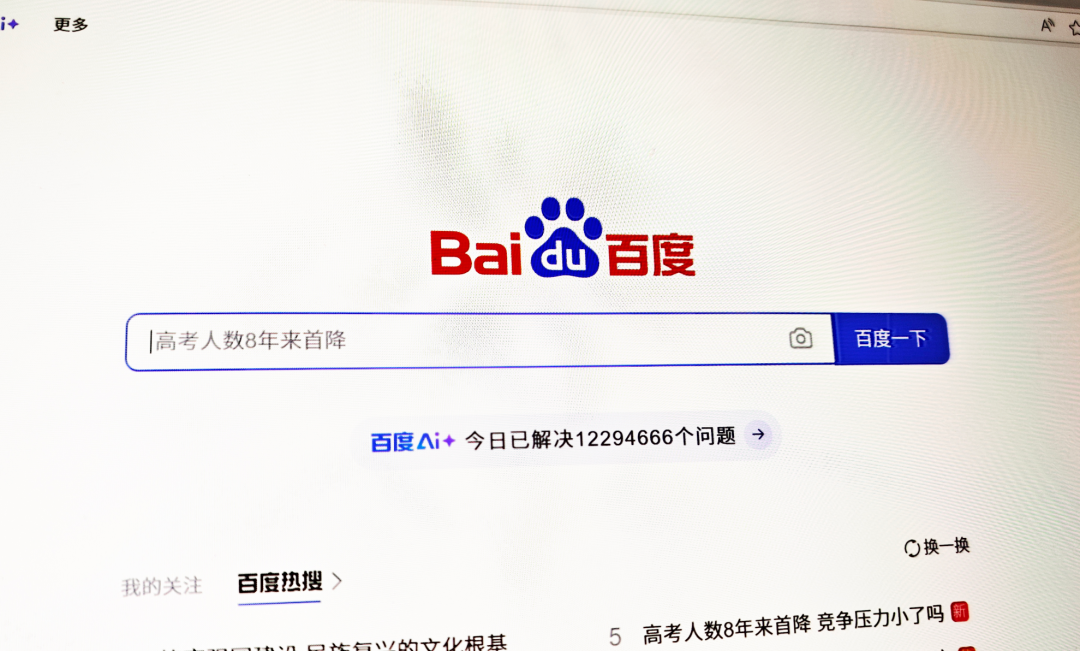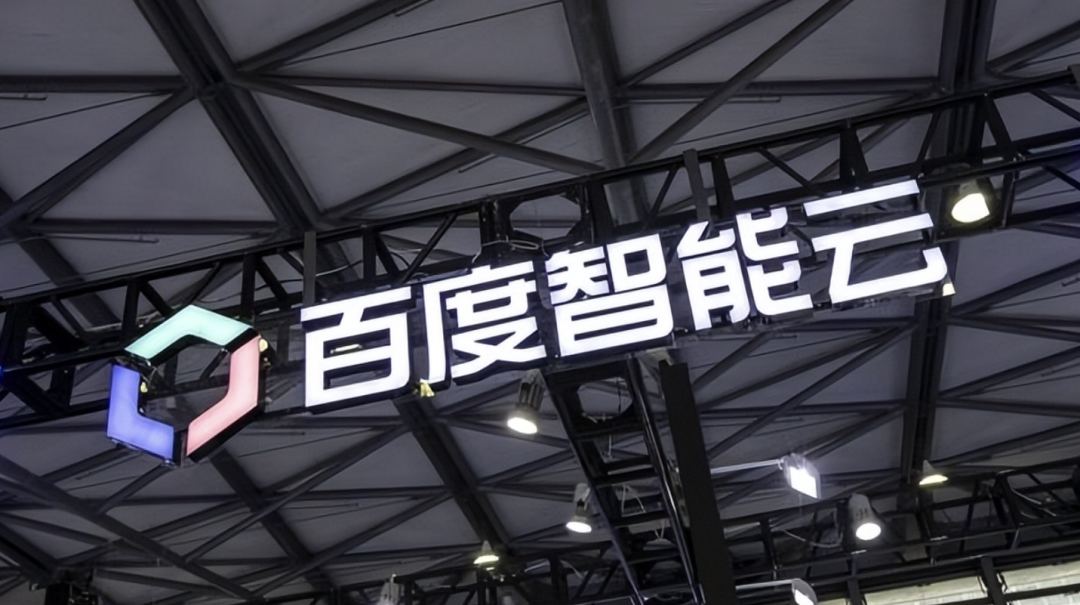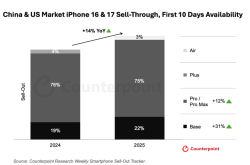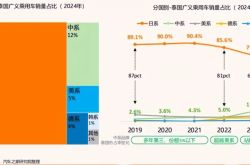Baidu's Intelligent Cloud Soars, Yet Search Business Struggles; Revenue of RMB 32.5 Billion Belies Li Yanhong's Lingering Concerns
![]() 05/29 2025
05/29 2025
![]() 825
825

By Wang Desheng / Layout by Ren Yingying
In the bustling streets of Dubai, an autonomous vehicle, equipped with advanced sensors, glides smoothly past the iconic Burj Khalifa. Inside, there's no driver; the steering wheel turns autonomously, while passengers leisurely scroll through their phones. This marks Baidu Luobo Kuaipao's inaugural road test in the Middle East, serving as a vivid testament to Baidu's AI strategy on the global stage.
This May, as Baidu Luobo Kuaipao embarked on open-road verification tests in Dubai, local resident Hassan experienced a driverless taxi for the first time. "I was a bit nervous initially, but the car drove exceptionally smoothly," he shared on social media. "It felt like an invisible, seasoned driver was at the wheel."
Simultaneously, Baidu unveiled its Q1 2025 financial report in Beijing, showcasing impressive results: total revenue reached RMB 32.5 billion, with core revenue at RMB 25.5 billion, a 7% year-on-year increase, and core net profit surging 48% year-on-year to RMB 7.63 billion. The market responded positively, with Baidu's share price jumping 6% at the opening bell.
International capital has also voted with its wallet, expressing confidence. Bridgewater Associates increased its Baidu stake tenfold, Fidelity Investments significantly boosted its position, and Cathie Wood, known as "Woodie," bought Baidu shares six times within a month and a half.
However, beneath these impressive figures lies another set of data that merits attention: online marketing revenue declined by 6%, and free cash flow stood at a negative RMB 8.9 billion. These numbers paint a picture of a Baidu in the throes of transformation, reaping the dawn of AI-driven growth while grappling with the dual pressures of declining traditional businesses and high investments in emerging sectors.
01 The AI-Powered New Engine Shines Brightly
The star of Baidu's Q1 2025 financial report is undoubtedly its intelligent cloud business, which grew at a robust 42% year-on-year rate, emerging as the primary growth driver. Intelligent cloud not only boasts rapid growth but also signifies the successful commercialization of Baidu's AI technology.
Baidu's rapid iteration of AI models is remarkable. Within just a few months, the company released upgraded models such as ERNIE Bot 4.5 Turbo and ERNIE Bot X1 Turbo, significantly reducing prices while enhancing performance.

"The price of ERNIE Bot 4.5 Turbo is 80% lower than that of 4.1, and the price of ERNIE Bot X1 Turbo is half that of ERNIE Bot X1," Li Yanhong emphasized during the analyst call, highlighting its cost advantage. These price reductions directly increased the penetration rate of enterprise AI applications.
Baidu's AI application ecosystem is also expanding rapidly. The number of paid users for AI functions on Baidu Wenku has surpassed 40 million, with 97 million monthly active AI users. In terms of the developer ecosystem, Baidu's Qianfan platform has attracted tens of thousands of enterprises to settle in.
02 Irreversible Decline in the Core Search Business
While Baidu's emerging businesses surge ahead, its traditional core business is showing signs of fatigue. The financial report reveals that Baidu's online marketing revenue was RMB 16 billion, a year-on-year decrease of 6%. This decline occurs amidst the recovery of the overall internet advertising market, making it particularly glaring.
Behind the advertising revenue decline lies the profound challenges facing Baidu's core business. With the rise of content platforms like Douyin and Kuaishou, as well as competition from various AI search products, the moat of Baidu's traditional search business is eroding.
Senior industry observer Liang Zhenpeng pointed out, "Live streaming platforms such as Douyin and Kuaishou, as well as new media like Toutiao, have significantly eroded Baidu's advertising share." This view underscores the structural reasons behind the decline in Baidu's advertising business.

Baidu's efforts to transform its mobile ecosystem have yet to fully offset the impact of advertising declines. Although the Baidu App reached 724 million monthly active users in March, a year-on-year increase of 7%, user growth has not translated into an increase in advertising revenue.
Baidu Search is accelerating its AI transformation. The proportion of AI-generated content in search results jumped from 22% in January to 35% in April. However, this transformation may exacerbate revenue pressure in the short term due to the differences in business models between AI search and traditional search.
Compared to its former "BAT" peers, Baidu's growth rate appears relatively subdued. Tencent's revenue in Q1 2025 increased by 13% year-on-year, Alibaba's revenue by 7%, and JD.com's revenue achieved the highest year-on-year growth rate of 15.8% in nearly three years.
Another pressure Baidu faces stems from personnel restructuring. Data shows that Baidu's workforce decreased from 41,300 at the end of 2022 to 35,900 at the end of 2024, with a layoff rate of nearly 14% over two years. While this scale of personnel optimization reduces costs, it may also impact the company's long-term innovation capabilities.
03 Luobo Kuaipao's Impressive Global Performance
The autonomous driving business, Luobo Kuaipao, also delivered impressive results. In the first quarter, Luobo Kuaipao provided over 1.4 million rides globally, a year-on-year increase of 75%. As of May this year, the cumulative number of services provided by Luobo Kuaipao has exceeded 11 million.
Luobo Kuaipao's internationalization efforts are noteworthy but bring new challenges. In the first quarter, Luobo Kuaipao successfully entered the Dubai and Abu Dhabi markets and initiated open-road verification tests in Dubai. Baidu plans to deploy over 1,000 fully driverless vehicles in Dubai.
Regulatory environments and privacy regulations vary significantly across countries. In the Middle East, data localization requirements are strict, necessitating Baidu to establish data processing mechanisms compliant with local standards. These compliance requirements increase operational costs and complexity.

The European market has even stricter data privacy protections. It is rumored that Baidu is exploring expanding Luobo Kuaipao to the Swiss and Turkish markets. GDPR-like regulations in these countries require companies to adhere to stringent data processing standards, and cross-border data transfer faces restrictions.
Luobo Kuaipao invests heavily in technical safety. Baidu's L4 autonomous driving large model, Apollo ADFM, has passed the highest level of functional safety certification, ASIL D, with an accident rate only 1/14th that of human drivers. This safety performance is crucial for winning trust in the international market.
Cost advantage is a significant competitive force for Luobo Kuaipao's internationalization. The price of the sixth-generation driverless vehicle is only RMB 204,600, one-seventh that of Google's Waymo vehicle and lower than Tesla's planned 2026 mass-produced cybercab (USD 30,000). This price advantage helps accelerate global market penetration.
Fast Company, a globally renowned business magazine, commented, "Luobo Kuaipao's performance has surpassed Google's Waymo driverless cars, and Chinese technology is reshaping the global industrial landscape with groundbreaking innovations." This evaluation reflects the international market's recognition of Baidu's autonomous driving technology.
04 The Cost Dilemma of Intelligent Cloud
The intelligent cloud business was the star of the financial report. A 42% year-on-year growth rate became the biggest highlight, with an operating profit margin exceeding 10%, seemingly opening up a new path for Baidu.
However, a closer inspection of the intelligent cloud business reveals a different story. A senior insider in the cloud computing industry revealed, "After the price war for large models began, every call incurs a loss. Vendors are competing based on who has more ammunition, not who has superior technology."

Baidu has initiated a brutal price war in the large model field. In April 2025, Baidu reduced the price of ERNIE Bot 4.5 Turbo by 80% compared to the previous generation and the price of ERNIE Bot X1 Turbo by 50%. The input price was reduced to RMB 0.8 per million tokens, and the output price was RMB 3.2.
This pricing strategy led to user growth. The Qianfan platform attracted over 20,000 enterprises, more than 30,000 intelligent agents were created, and over 50,000 developers and tens of thousands of enterprises settled in. However, the cost was also substantial.
"Previously, everyone still made some money, but with such a price reduction, the gross margin dropped from over 60% to 0%," said an industry insider, describing the fierce current state of the large model market. The essence of this price war is a capital consumption war, and Baidu must continue to invest heavily to maintain its technological advantage.
R&D expenses reached RMB 4.5 billion, and free cash flow was negative RMB 8.9 billion. Behind these numbers lies the true situation of the intelligent cloud business: rapid growth but at a significant cost.
Baidu plans to light up a 30,000-card cluster and explore the boundaries of higher-performance computing power. The arms race for computing power is devouring Baidu's cash flow like a bottomless pit.
Conclusion: Baidu's Transformation is Far from Complete
Looking back at Baidu's AI journey, from the launch of the Apollo program in 2017 to the introduction of ERNIE Bot in 2023, from closed testing in Haidian, Beijing, to public operations on the streets of Dubai, Baidu has walked for eight years amidst doubts.
Today, with a 42% growth in intelligent cloud, 11 million service records for Luobo Kuaipao, and capital giants increasing their positions with real money, one thing is clear: Baidu's AI strategy is shifting from the investment phase to the return phase.
However, the transformation is far from complete. As the traditional advertising business continues to decline, AI investments consume vast amounts of cash flow, and international competition intensifies, Baidu still needs to walk a tightrope between short-term profits and long-term strategies.
Numbers will fluctuate, technology will iterate, but whether global users truly embrace driverless services and whether AI search can create a business model that surpasses the traditional one will ultimately determine the success of Baidu's transformation.
END








